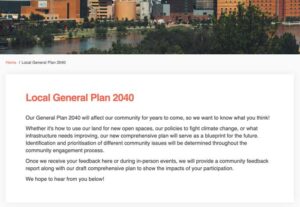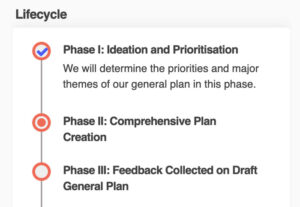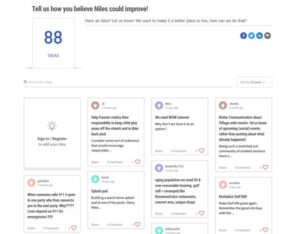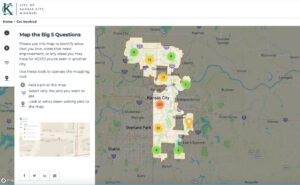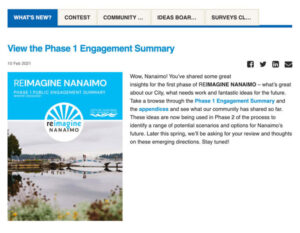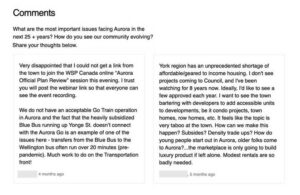How to Run a Local Comprehensive Plan Consultation on EngagementHQ
Local comprehensive plans serve as blueprints for the continued progress of a community, usually for years or even decades to come. With the major impacts of a plan affecting virtually everyone in a community, stakeholder engagement should be a priority throughout the development process.
Historically, community engagement can be frustrating and costly while trying to connect with enough community members. Scheduled town hall meetings or social media discourse tend to lead to poor engagement by themselves. Implementing online community engagement helps planners and engagement practitioners reach more people (not only is an online engagement platform accessible 24/7, but some residents aren’t as comfortable sharing in-person), minimize pushback late in the planning process, and ensure your local plan best reflects stakeholders’ views, opinions, and priorities.
EngagementHQ helps you prevent a vocal few from dominating community feedback and empowers a more diverse group of the community to participate.
We will be covering five main topics to help you develop an effective local comprehensive plan:
- Community Engagement Strategy
- Collect Relevant Information by Asking the Right Questions
- Create an Inviting Project Page
- Use a Mix of Engagement Tools to Hear From More People
- Sharing your Final Comprehensive Local Plan
Community Engagement Strategy
Additionally, EngagementHQ serves as your hub for all things community engagement. Our online platform facilitates the collection & analysis of your community feedback while helping organize your engagement efforts.
To make the most of its capabilities, planning from the start is essential. Take note of all of your resources that can be leveraged to reach the public, improve the quality of the information you receive, and set up your engagement for success. Set goals for your public consultation and prioritize your must-know information throughout the engagement. With goals in mind and your resources accounted for, create a strategy for using those resources to achieve your organization’s objectives.
While you will reach many more people through online participation, other tactics to gather feedback are still important! A blended approach to engagement seems to work best for most local comprehensive plans. One-on-one meetings, focus groups, town halls, marketing your site on social media, online surveys, booths at community events, and community visioning workshops can all be used to engage different stakeholders. The data gathered outside of your site can be input into EngagementHQ, allowing for both online and in-person participation to be reflected in your end data.
With the various engagement tools, customization options, informational widgets, SMS messaging, newsletter functionalities, and more in EngagementHQ, you can create a dedicated space for you and your residents to write the best local plan possible.
Collect Relevant Information by Asking the Right Questions
Before public feedback begins to be collected, it’s important to make sure you are asking the right questions and have envisioned how you will use the data to make community-informed decisions. The goal should be to ask compelling, specific questions that actually pertain to the daily lives of residents (without the local gov jargon). Knowing what you want your data to look like at the end of the public consultation will help you make sure residents have had their say on all the most important aspects of the local plan. Additionally, determining the optimal tools and techniques you’ll use to engage your community becomes easier once you’ve planned out data and analysis.
Using open-ended tools, such as Forums or Places, are most helpful at the start of your project, during the community visioning phase, while you are looking for wide-ranging ideas and comments. Closed environment tools can be utilized further along in the public consultation process when the priorities for the plan are more specified. Understanding your decision-makers’ appetite for quality vs. quantity of community input will help you define your engagement approach as well.
When envisioning the data and analytics needed to support your comprehensive plan through the approval process, it’s mostly about making sure it is a fair process. EngagementHQ helps you to own the process and ensure your engagement is fair, lawful, and meaningful — creating a consultation that works for both community members and decision-makers.
Create an Inviting Project Page
The first impression for an online visitor will be your project page. To encourage participation and community stakeholders to explore the page, an engaging, easy-to-read description and captivating imagery should be present. A description and project image could look something like this:
Inspire Better Feedback with Information Widgets
Information tools directly on a project page can encourage visitors to learn more about why you are creating a new comprehensive plan. They also help improve the quality of data you receive because more participants will know the context around general plan creation. This type of informed opinion is vital for creating a general plan that is based on quality public discourse as opposed to knee-jerk reactions.
Project Lifecycle: This is a visual way to express the timeline of the planning consultation and where the project is currently.
Who’s Listening?: This info tool is important to humanize the project. Residents will be keener to engage if they know real community leaders are listening.
FAQs: Questions naturally come up from the community throughout the public engagement process. This is a place to continuously update as common questions pop up.
Important Documents: Comprehensive plans cover a wide range of topics. PDFs and other documents that provide important community context will help residents better understand the project.
Use a Mix of Engagement Tools to Hear From More People
Using the right methods, at the right time, to engage the right people has always been a mantra of good public consultation. With EngagementHQ, you have a choice of eight engagement tools that you can mix and match to create great conversations. In addition, by using tools like Surveys, Forums, Ideas, and Places, you can encourage more balanced and productive debate between your residents, which can lead to more meaningful insights and useful contributions.
Let Your Community Members Brainstorm with Ideas
Nobody knows your community better than your residents. Empower them to give you ideas and innovate in the early stages of your project. At the beginning of a comprehensive plan creation process, ideas can be implemented more easily into the plan rather than later on once a draft is completed. Lead your online visitors to the idea board from the very start. Make sure not to make the prompt too specific so all community ideas are welcome!
Participants can like, dislike, and even comment on other community member’s ideas. This will help you quickly identify the most popular ideas.
Residents Can Give Location-Based Opinions with Places
The Places tool on EngagementHQ gives your community members a unique way to express themselves. They may struggle with what issues should be prioritized in a survey question, but they may have a favorite public space in the area or ideas for specific improvements. The pins highlighting these locations within your community may shed light on changes that could be done throughout your community on a macro-scale.
Places empowers your residents to share areas of interest and can inform your plan in a major way.
Provide Updates on the Planning Process with News Feed
Participants may not come back to visit the project page often after having their say. But, when they do, the news feed is useful to close the loop throughout the process, not just at the end of the consultation. Showing the impact of community feedback often will encourage participants to come back to give more structured feedback once a draft plan is being evaluated by the community.
The News Feed tool is great for summarizing and keeping residents excited about the future of their community!
Implement Polls to Invite Participation
Polls can be used to gather quantitative data on any question you want. Our favorite way to use the Polls? To break the ice with visitors! Because comprehensive plans cover such a wide range of topics, the opportunities to engage online could be overwhelming to some stakeholders. Polls can invite those community members in, allowing them to participate in a poll that is more low-stakes or even fun to answer.
Polls can be changed and added throughout the process to boost engagement or to answer an important question later in the consultation. It is an easy way to get your community excited about having their voices heard.
Gather Open Feedback with Guestbook
Guestbook is one of our most open engagement tools, allowing your community stakeholders to respond to a prompt with comments of their own. Guestbook is a great alternative to our Forum tool if you are engaging on particularly controversial topics. Guestbook allows for comments, but no direct responses, likes, or dislikes between visitors. Participants can feel more comfortable sharing their opinions with Guestbook because they know their comment will live on its own.
Sentiment analysis makes it easy to analyze the open-ended comments collected as well. This feature will be great for asking about particularly innovative ideas and quickly gauging how your community feels toward them. Use EngagementHQ’s AI capabilities to save time instead of sifting through open-ended comments yourself.
Use Surveys to Strengthen your Community Insights
Surveys can be used throughout the consultation process, but usually are even more effective during the back half of the engagement process. Quantitative feedback from Surveys can strengthen confidence in your community insights. After the visioning portion of the engagement is done, Surveys help you to discover how the public actually feels about new ideas from the visioning phase and what issues are truly important to participants.
Surveys are customizable and can fit your community’s needs. Imagery can be added for context to a question. There are also over 10 different types of survey questions that you can ask, including rank choice, select all that apply, essay, and more.
Once your survey is complete, use our analysis capabilities to filter by demographic and see which key groups you’ve reached. Then, quickly pull EngagementHQ generated reports that show your community aggregate data, as well as details on each individual question.
Sharing your Final Local Comprehensive Plan
While it’s always ideal to have the vast majority of your community in support of a new comprehensive plan, it doesn’t always work out that way. Most of the time, there will be some stakeholders who would have preferred to see different initiatives in your finalized plan. That’s ok!
Nonetheless, your comprehensive plan will be easier to pass within local government when backed by strong quantitative data showing support, as well as data expressing the opinions of those not as satisfied. Rich feedback analysis will help show support for the finalized general plan, as well as areas where there is disagreement, identifying opportunities for discussion and mediation in the future. When different viewpoints are reflected in your community engagement data, it shows that all voices were truly valued.
Sharing a full community feedback report with data and opinion from participants will also show how they influenced the plan, along with building trust, which leads to easier community feedback collection in future projects. Lastly, make sure to keep your project page live after the plan is completed to give participants a chance to see the final general plan and report.
You can see an example comprehensive plan project using a mix of engagement and information tools on our demonstration site go.EngagementHQ, we hope you’ll take a minute to see the tools in action, drop a pin, or complete the survey so you see how EngagementHQ works first-hand for this type of consultation.

